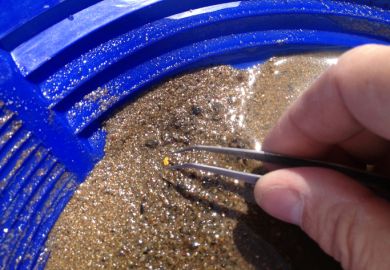Here is the dilemma. Consciousness is all about personal experience, feelings, thoughts, sounds, colours, emotions. In a word, it is subjective. Science, by contrast, is virtually defined by its objective status: detached, empirical, repeatable experiments, used to test clear falsifiable theories. So how can there be a scientific study of consciousness?
For most of the past century, when behaviourism ruled in psychology, the possibility was simply denied, but in recent decades that has all changed, and Rodolfo Llin s is a leader among a growing band of neuroscientists who are not ashamed to put consciousness at the centre of their research programmes. He also represents much current scholarship in his insistence on the biological nature of mind and consciousness. He is equally opposed to Cartesian dualism, which held that "the mind appeared suddenly as a result of spectacular intervention", and the computer-type metaphor that says "the brain is hardware and the mind software"; such language is "totally misleading".
In I of the Vortex , Llin s argues both that consciousness is a product of biological evolution and that it was of central importance right from the earliest stirrings of animal life. Here he goes against a commonly held view that only the highest animals are conscious, and that even for them it is only a byproduct of evolution, not a selected attribute useful for survival.
Noting that plants do not have a brain and nervous system, Llin s conjectures that their development in animals is closely related to mobility. He explains the body's motor system (the central generation of movement) and sensory system (the generation of "mindness") as parallel elements in the same process, both linking the animal's control system to what is happening in its environment. "Mindness" has from the very beginning been the internalisation of movement. There are similarities here to the theories of Nicholas Humphrey, Rodney Cotterill and Susan Hurley.
It cannot be the case that our actions are simply a response to our perceptions. For a start, there simply is not enough time. Facing a Pete Sampras serve, it takes longer for the nerve-messages to travel from eyes to brain to arm than it does for the ball to reach the back of the court. Only by anticipating the shot is there any chance of the serve's being returned. Llin s goes so far as to claim that prediction, "with its goal-oriented essence, so very different from reflex", is the ultimate function of the brain. This is achievable because the mind/brain is a self-activating system, with the properties of the external world already embedded over evolutionary time, and then modified by individual experience. It does not have to act "from cold" each time.
The motor system thus has a large store of "fixed action patterns" (Faps), which serve two purposes. They carry out routine business like digestion and maintaining posture, and also execute fast responses to emergency situations. In accordance with his view of the similarity of the motor and sensory systems, Llin s believes that the sensory system also has Faps, but unlike motor Faps that act externally, they find expression internally as conscious sensations, what philosophers of mind call "qualia". At a stroke, this proposition gives qualia both a physical reality ("neuronal activity and sensation are one and the same event") and a crucial survival role.
There is a widespread feeling among researchers that consciousness is redundant, in evolutionary terms, because non-conscious reactions are always quicker and therefore better for survival. Llin s counters that qualia, as the expression of sensory Faps, are "a property of mind of monumental importance" for animals just as much as humans. Like motor Faps, they greatly simplify the brain's functions, with a consequent saving in time and energy. This is especially true of learning. A thorn may prick me this time, because the conscious sensation comes too late to stop it, but that does not make the pain useless. It has embedded information about thorns that I can use in future, either to avoid them or to "tame" them, eg use them as tools or weapons.
But who am "I", what is a "self"? Llin s concludes that the self is "a generated abstract entity". In the metaphor of the book's title, "I" am "a vortex without true existence other than as the common impetus of otherwise unrelated parts". As to what generates this abstract entity, Llin s, along with Francis Crick, holds that it is "the intrinsic oscillatory electrical properties of the brain", in particular the 40Hz coherent waves in the thalamocortical system. This temporal coherence fleetingly binds the components of internal and external reality into a single construct from which the predictive functions of the brain may operate in a coordinated fashion: "It binds, therefore I am!" Anthony Freeman is managing editor, Journal of Consciousness Studies .
I of the Vortex: From Neurons to Self
Author - Rodolfo Llinás
ISBN - 0 262 12233 2
Publisher - MIT Press
Price - £16.95
Pages - 264



